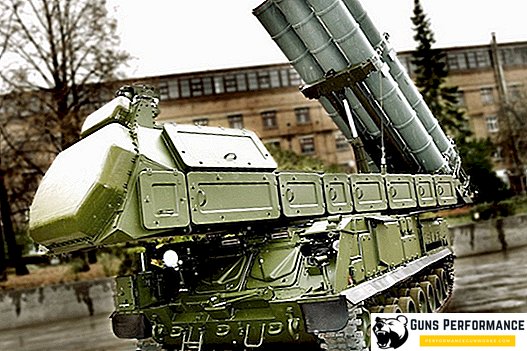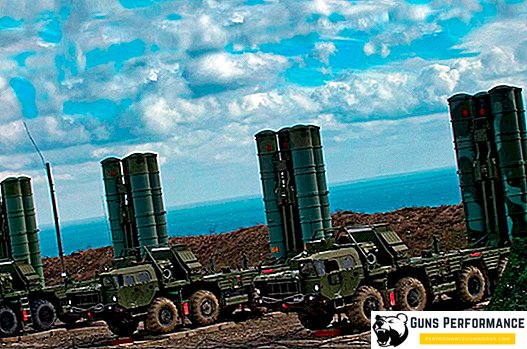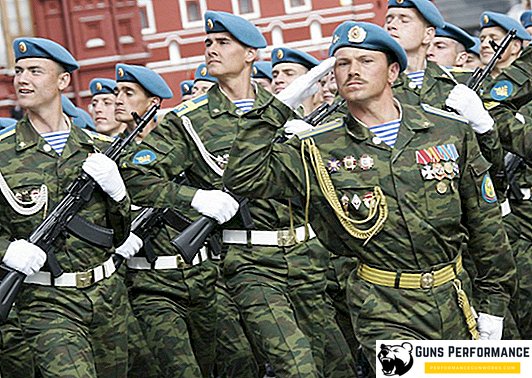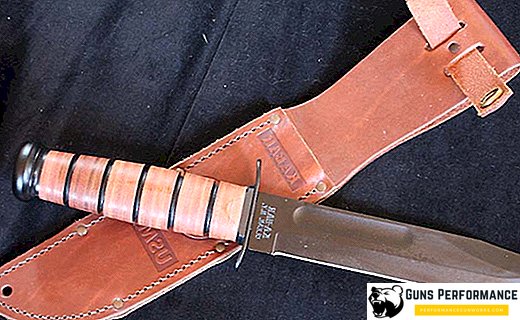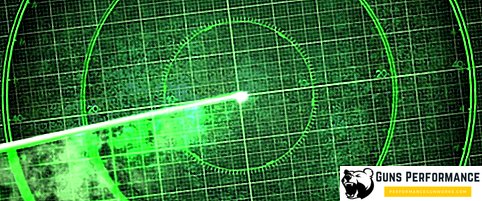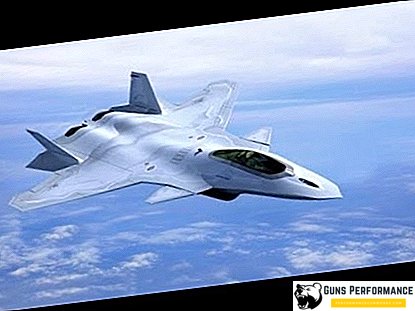The President of Bolivia is the head of government and state. According to the Constitution, which is now in force in the country, the head of state is elected for a five-year term, at a nationwide election. A candidate is selected as president who receives more than 50% of the total number of votes in an election. If the candidate does not get the required number of votes, the Bolivian parliament elects a ruler from among the two candidates who gained the most votes in the elections. Currently, the duties of the President of Bolivia are performed by Evo Morales, who was elected in 2006.
Evo Morales is the first ethnic Indian to be elected head of state. This role suited him perfectly - he was re-elected in 2009, according to the new Constitution, and in 2014 he was re-elected for a second term. The deadline is exactly the second, since in 2009 the countdown began anew, in connection with the adoption of the new Constitution.
The history of the conquest of the country and its colonial period
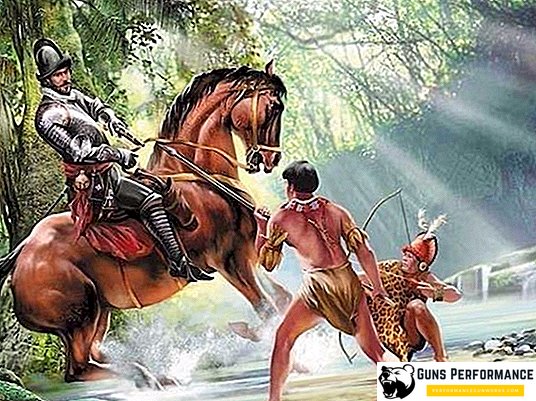
The present territory of Bolivia used to be part of the great Inca Empire. In 1538, it was conquered by the Spaniard Hernando Pizarro, whose goal was to capture the innumerable wealth of the Indians and the creation of a new colony. Spanish conquerors immediately founded several settlements, which gradually grew. The territories of Bolivia at various times bore a different name. At first it was the province of Charcas, then - Upper Peru, only in 1825 the country became known as Bolivia.
For 300 years, while the country was under the rule of the Spanish crown, the main task of the colonialists was to obtain maximum profit from local mines and plantations. To this end, the following reforms were carried out:
- Half of all the land was distributed to the Spanish colonists;
- Local residents were recorded in the serfs and had to work out the labor service on the lands that used to belong to them;
- According to royal decrees, huge amounts of money were invested in the development of mines, which also had to work the Indians.
The entire colonial period in the XVI-XVII centuries, the territory of modern Bolivia was the main economic center of the entire Spanish empire in Latin America. It was here that were the largest silver mines in the region and even the world.
Since the work in the mines was very hard, it was mainly Indians and convicts who worked there. The local aborigines were poor workers, as they were not accustomed to hard work, and were too proud. Constantly rising uprising against the Spanish conquerors. The largest Indian uprising in history was the rebellion of 1780-1781, which was led by the Cathari brothers. The peculiarity of this event was that mestizo and Creoles came out against the Spaniards together with purebred Indians. The brothers managed to gather under their banner 20-30,000 troops, which were able to capture several cities. Nevertheless, the uprising was firmly suppressed, and punitive for several years continued to finish off the remnants of the army of Katari.
In 1809, a new uprising broke out in Chikusaka. It was attended by almost all representatives of ordinary people. In addition, the rebels were joined by:
- Intellectuals;
- Students;
- Part of the progressive military.
The main task of the rebels was the overthrow of Spanish rule and the acquisition of independence by the country. This rebellion was brutally suppressed by Spanish troops, but unrest continued throughout the country for the next 15 years. In 1824, the rebels, who at that time were able to create their own army, led by General Sucre, managed to defeat the Spanish troops.
In 1825, an independent republic of Bolivia was proclaimed in Chikusaka. This name was given to the country in honor of Bolivar, who launched a revolutionary movement in Latin America.
The period of independence of Bolivia in the XIX century

General Antonio José de Sucre became the first head of the government of independent Bolivia. By order of the president, a number of economic reforms were carried out in the country, most of which failed. The years of government of the first independent leader of the country did not last long. Due to the uprising of local residents and intrigues of the opposition, Sucre was forced to resign in 1828. In his place in 1829 Andres Santa Cruz was elected. This head of state was famous for creating the Peruvian-Bolivian Confederation in 1936. In addition, he managed to save the country, which was practically on the verge of bankruptcy.
The Confederation of States regarded Chile as a direct threat to its security, so the government soon announced an ultimatum to President Santa Cruz to terminate the confederation treaty. Since the head of Bolivia ignored this note, the Chilean army went to war against Bolivia. In 1839, Chile won the war, and President Santa Cruz was driven out of Bolivia in disgrace.
After that, a long period of instability began in the country, during which the presidents often changed, and various groups came to power that had military resources. The centers of uprisings constantly flared up, as the new government tried to establish its own rules. In September 1850 slavery was abolished. Despite this, the Indians have long been used in remote plantations and mines.
In 1879, the war began with Chile, which arose because of part of the Atacama Desert, where stocks of nitrate were found. This confrontation lasted 5 years and ended in the defeat of Bolivia. The peace treaty with Chile was concluded only in 1904.
Power in Bolivia in the first half of the XX century

Already in 1899, Bolivia discovered the richest reserves of tin in its territories. A few years later, the country entered the world leaders in the extraction of this metal. Immediately after that, this area was brought under the control of the United States and Great Britain. Under President Ismaela Montes Gamboa, who ruled from 1904 to 1909 and from 1913 to 1917 for two consecutive terms, the country established economic relations with the Entente countries. During the First World War, foreign investment in the development of the Bolivian economy increased dramatically. From the country exported:
- Tin;
- Tungsten;
- Copper;
- Antimony;
- Bismuth.
After the Bolsheviks won in Russia, the ideas of anarchism and the dictatorship of the proletariat became popular in Latin America. There were followers of the ideas of Marx, and there was talk of a socialist revolution. Especially these ideas were popular under President Hernando Siles. In 1936, a revolution occurred in the country. The head of state was General José Toro Ruilov. He declared his country a socialist republic, and hurried to confiscate the property of American companies in Bolivia.
In 1937, another military coup took place in the country, as a result of which Colonel Herman Bush Besser came to power. He perfectly understood the ideas of socialism, so he immediately established state control over the entire mining industry. In addition, when it was developed the first labor law. The fate of this ruler was tragic - in 1939 he committed suicide, as the power in Bolivia was seized by a group of military led by General Carl Quintanilla.
In 1940, Enrique Peñanda del Castillo was elected president. Under him, several left-wing parties appeared in the country, which led to the 1943 revolution. After the revolution, Goulberto Villarroel became president. He constantly supported workers who worked at tin mines. This situation did not like the owners of the mines, so they provoked a popular uprising in 1946, taking advantage of the difficult economic situation.
Presidential and military power in Bolivia in the second half of the 20th century

In 1951, the post of president of Bolivia took Hugo Balivian Rojas. The opposing party did not approve this candidate and handed over power to the military junta. This provoked a rebellion, and military power was overthrown. The representative of the National Revolutionary Party (NRM), Victor Paz Estenciro, became the new leader of the state. With him, the country made a huge leap in the economic and social sphere:
- The Indians, who owned at least a small piece of land, were given the right to vote;
- In the villages began to build hospitals;
- Peasant cooperatives began to organize;
- Nationalized all tin mines in the country.
The next president of the country was elected in 1956. It was Hernan Siles Suazo. The new leader tried to lead the country out of the economic crisis with the help of the International Monetary Fund. The reforms included wage restrictions for all state employees, as well as the liberalization of food prices. But all these measures only worsened the situation in the country. In the 1950s, the anarchist movement gradually began to fade.
In 1960, Victor Paz Estenzoro became president again. In 1964 he was re-elected for a second term, since this leader enjoyed prestige among the people. The Bolivian military did not like this, and they carried out a coup in November 1964. The following presidents of the country were:
- From 1966 to 1969, the country was ruled by Rene Barrientos. Under his command, the guerrilla movement of Che Guevara, who tried to raise the local population to fight against the existing government, and revolutionized, as in Cuba, was defeated;
- Luis Adolfo Siles Salinas led the country for several months in 1969;
- From 1969 to 1970, the presidency was occupied by Alfredo Owando Candia. He was replaced by a military junta;
- From 1970 to 1971, the country was ruled by Juan José Torres González;
- In 1971, Hugo Banzer was a military coup.
Hugo was not going to let the power out of his hands and declared that the Bolivian army was able to effectively manage the country until 1980. In 1974, there was a coup attempt in the country, after which Hugo Banser banned all trade unions and parties in the country.
In 1978, elections were held in Bolivia, in which Juan Pereda Absun won. He could not hold power in his hands, like his predecessors. Until 1980, several other presidents changed in the country. This year Hernan Siles Suano came to power, but he was overthrown in two weeks by the military. The head of the military junta became Luis Garcia Mesa, who became president. With him, the country turned into a stash of drug dealers, because the president himself openly traded cocaine. Only in 1982, Siles Suano came to power, who was recognized as the present head of the republic, did he win the 1980 election.
In 1985, Paz Estenzoro was elected president. When elections were held in the country, he, together with his opponent Hugo Banzer, could not get the necessary number of votes. President Estensoro appointed a national congress. The new head of Bolivia has been strengthened to implement development programs developed by the International Monetary Fund. As a result, unemployment and poverty have only increased.
In 1989, Paz Zamora came to power. By order of the new president in the country began to build new schools and hospitals. Although US President George Bush Sr. insisted on completely eliminating the cultivation of coca leaves, Zamora tried to give this business a touch of legality, stating that coca is grown for industrial and medical purposes. The United States accused the administration of the Bolivian president in connection with the cocaine mafia and prohibited Zamora from entering the United States.
In 1993, Sanchez de Losado came to power. He ruled the country until 1997. The years of government of this leader were fairly calm, so he was re-elected in 2002. In 1997, Hugo Banser became president. He revived dictatorial forms of government and ruled Bolivia with an iron fist. In 2000, the people began mass protests against the government. An experienced politician Banser quickly and effectively deal with the discontented. Despite this, the uprisings soon swept the entire territory of the country. In 2001, Hugo Banser resigned.
Presidents of Bolivia in the 21st Century

In 2002 there was a re-election of President Lozada. The second term of the head of state did not go as smoothly as the first. Already in 2003, a wave of regular protest rallied around the country. In October of this year, in the capital of Bolivia, armed clashes occurred between the police and the military on the one hand, and the demonstrators on the other. At the same time 76 people died - mostly protesters. In 2003, Sanchez de Lozada resigned, handing over his powers to the vice president. Carlos Mesa could remain the head of Bolivia until 2007, but he resigned in 2005.
The next president was Eduardo Rodriguez Weltze. He became the head of state, since none of the higher-ranking officials wanted to take this post. Veltse was chairman of the Supreme Court of Bolivia, and he was appointed interim president, while organizing the elections. In 2005, the new head of state decided to dispose of 30 HN-5 anti-aircraft missile systems, which were purchased in the 1990s in China. Subsequently, the opposition accused him of treason because of this, but after a while the charges were dropped.
In 2005, the president of Bolivia became Juan Evo Morales - the first ruler of the state, who was a purebred Indian. Morales was elected by direct popular vote, something that has not happened in the country since 1978. The last ruler of Bolivia is a devotee of socialism. After his inauguration in 2006, he nationalized the oil and gas industry.
The board of the new president was not cloudless. In 2008, the opposition demanded to hold a referendum, which was supposed to decide on the recall of the head of state from his post. Morales agreed with the demand of the opposition and remained at his post, receiving more than 67% of the vote in support. In 2009, Morales issued a decree on renaming Bolivia into a “Plurinational State of Bolivia”. In the same year he was re-elected again. In 2014, the president was elected for a third term.
Beginning in 2018, Morales is the absolute record among all the rulers of Bolivia, in terms of the fulfillment of his powers. His party "The Movement for Socialism" now consistently gets 60-70% of the seats in the National Congress of Bolivia.
Responsibilities of the President of Bolivia and the government of the country

Bolivia is a republic with a presidential form of government. The head of state is elected for a five-year term. Since January 22, 2006, the state is ruled by Juan Evo Morales. The powers and status of the president are as follows:
- He heads the government;
- He is the commander in chief of the armed forces;
- Approves the composition of the cabinet;
- Issues and signs laws;
- Can declare war or make peace and more.
Juan Evo Morales held a referendum in 2009, during which the Constitution was amended. In particular, benefits for the Indians were introduced, permission was added to run for a second presidential term in a row.
In addition to the head of state, a bicameral parliament participates in the administration of Bolivia. It consists of 36 senators and 130 deputies. All of them are elected for 4 years. According to the country's Constitution, it turns out that the bicameral Congress is the highest legislative body in the country. In fact, this is far from the case. Although there are frequent revolutions in Latin America, Bolivia is the absolute leader in this regard. From 1825 to 1986 in the country there were about 190 coups with the change of power.
The adoption of laws in Bolivia is as follows:
- The law is adopted by the two chambers of Congress;
- Then he is handed over for promulgation to the president;
- President signs it. If the law does not like the head of state, then he can impose a veto on him;
- If the law is not approved by the ruler, then he again goes to Congress;
- In order to be accepted, 2/3 of senators and deputies must vote for its adoption.
The country's president and the ministers who are appointed by him are responsible for the executive power in the country.
Residence of the President of Bolivia

The residence of the head of state where the president’s reception is located is called Kemado. If you translate this name into Russian, you get "Burned Palace". This building is the official residence of the President of Bolivia and is located in the city of La Paz.
Прозвище "Сожжённый" появилось после пожара 1875 года, когда восставшие против главы государства Томаса Аметльера не смогли взять здание штурмом и сожгли его дотла. Вскоре резиденцию президента отстроили заново, причём здание перестраивалось и реставрировалось ещё не один раз, но прозвище его не поменялось. Президентский дворец Кемадо находится рядом с собором, а напротив него расположен боливийский парламент. Одной из главных достопримечательностей президентского дворца Кемадо является бюст Гуальберто Лопеса, который находится в фойе здания. Этот руководитель государства был повешен толпой мятежников прямо на фонарном столбе в 1946 году.
Изначально дворец назывался Кабильдо де Ла-Пас и его строительство начали в 1559 году. На стройку было выделено 12 000 песо, которые прислал вице-король Перу, Уртаго де Мендоса. Строительство было закончено через 2 года. В 1781 году здание было решено расширить. Были достроены следующие элементы:
- Создали внутренний двор;
- Была построена парадная лестница;
- Появились галереи и арки на втором этаже;
- Вокруг первого этажа построили аркады;
- В здании была размещена тюрьма.
Президентский дворец неоднократно страдал от революций, но новое правительство постоянно восстанавливало этот символ президентской власти.


